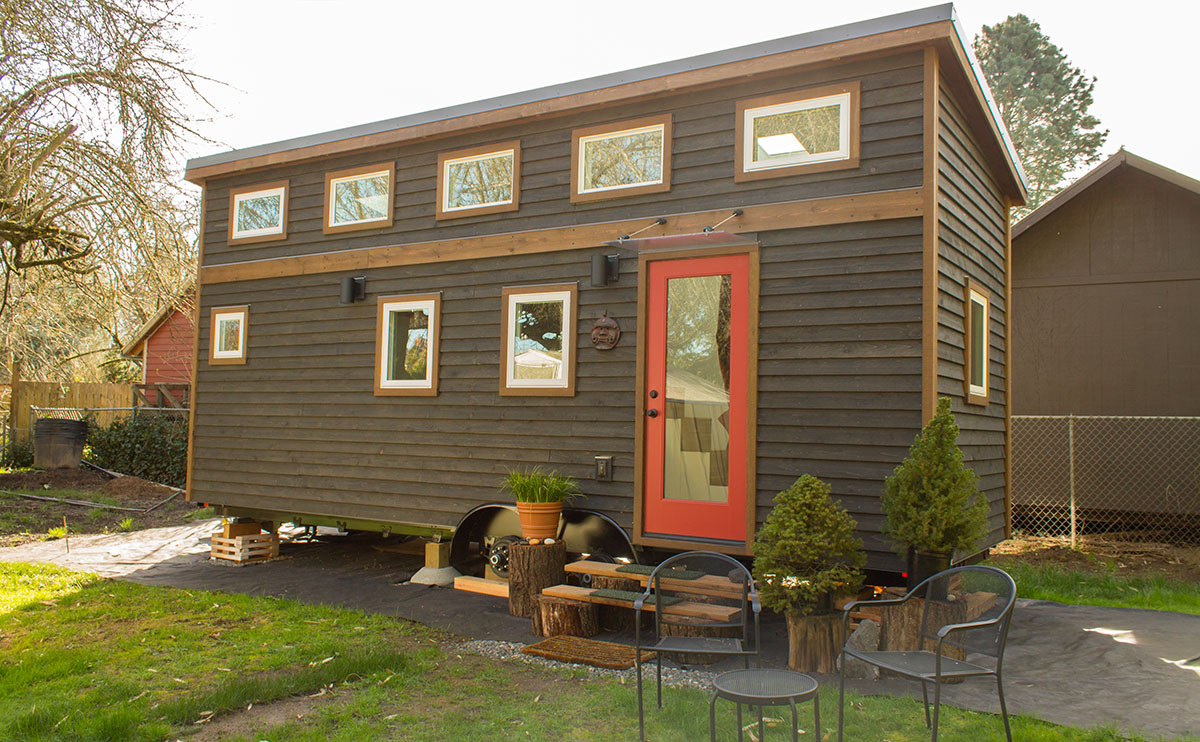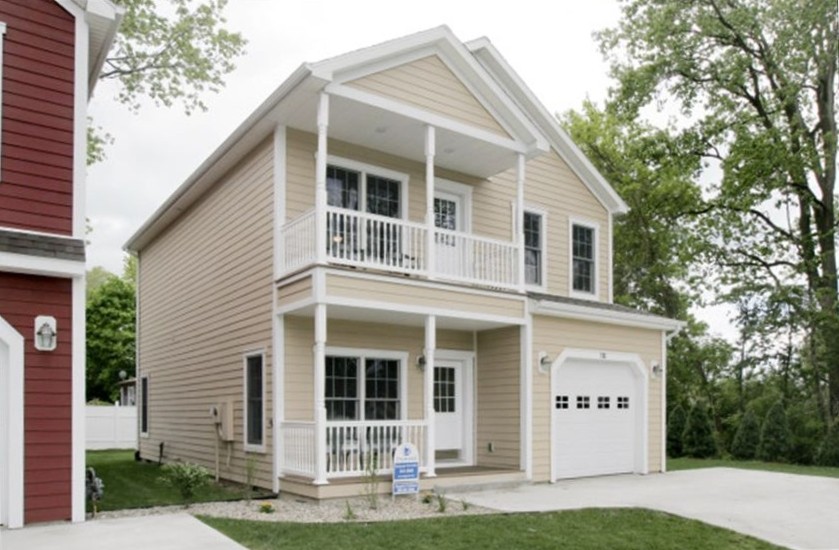Y our Tiny Home © had an exclusive and in-depth interview with Lia Kwan-Yin about her personal path to GOING TINY, what triggered her to simplify her life drastically and drive her to become a pioneer ahead of the TINY HOME MOVEMENT curve.
our Tiny Home © had an exclusive and in-depth interview with Lia Kwan-Yin about her personal path to GOING TINY, what triggered her to simplify her life drastically and drive her to become a pioneer ahead of the TINY HOME MOVEMENT curve.
Your Tiny Home © Interviewer:
Q1. When did you first think that going tiny would be a feasible trending solution to a global affordable housing problem?
Lia: My tiny home journey started way back in 2009 as I awakened to the truth of the failing current system in modern society, the corruption in the powers that be, the endless rat race and hamster wheel and that the common people were being unconsciously programmed into the illusion or the matrix of government, education, banking and health sectors that were ultimately run by the 6 corporations that ruled the world and sat at the top of the financial tyranny pyramid. The housing crisis was a rude awakening for many working professionals. A serious reality check that quickly turned into horror stories of job losses, career shake-ups, home evictions, foreclosures and in several cases of sudden homelessness as a result of bankruptcy. Having been privy to have worked in the emerging technology industry I had an intuitive gift of insights, trends and market predictions that even the high-earning working professional couple both in the IT field would struggle to buy that 2000 square foot house out in the city suburbia while still keeping the work life balance. Due to the disproportional income tax brackets, goods and sales tax, and overall cost of living to run a basic single family home, car and household – I had a horrid incline that this typical day-to-day lifestyle would not be sustainable without a drastic change in the public’s mindset due to the fast depleting natural resources and countless of meaningless distractions and menial tasks that kept one from spending that quality time.
THAT LIGHT FINALLY WENT ON! THAT AHA MOMENT THAT LEFT ME THINKING…HOW IS HUMANITY MEANT TO THRIVE AND SURVIVE WHEN EVERYONE LIVES IN SEPARATION AND COMPETES FOR NATURE’S RESOURCES AND EXCESSIVE MATERIAL WEALTH?
Your Tiny Home © Interviewer:
Q2. Can you share that defining moment that set your tiny home story in motion?
Lia: Yes, after being a property owner of 2 houses and 1 condo in Toronto for 7 years and at the peak of my career as a Director of New Products (in the technology sector), I realized that the homeowner title really just gave one bragging rights, a superficial title or piece of paper proving ownership on a said property. But really, the house was not truly yours because of the lifetime mortgage (french literal meaning being death bond) of 25 – 35 years that one was indebted to which seemed to be the equivalent to a life sentence in prison, and that the land it sat on was technically the property of the city with zoning laws, province, commonwealth or corporation-driven land development.
One powerful quote that sums up my defining moment and gave me the green light to begin my own tiny home story:
Normal is getting dressed in clothes that you buy for work, driving through traffic in a car that you are still paying for, in order to get to a job that you need so you can pay for the clothes, car and the house that you leave empty all day in order to afford to live in it.
Ellen Goodman

Your Tiny Home © Interviewer:
Q3. What made you shift your paradigm from an automatic consumer-centric one to an experience-centric conscious lifestyle?
Lia: In 2010-2012 I got plugged into these new sustainable and eco-friendly living movements of eco-built houses that were built with organic, up cycled and chemically-free materials yet still offered those modern luxuries and creature comforts of home, I liked the idea of earth ships, self-sustaining homes and off-the-grid and infinite energy resources. This was at the peak of the global housing crisis and seeing the downward spiral of the economy firsthand really gave me a reality check! Natural gas, oil, clean food and nature’s resources were at an all time “false scarcity” low and seemingly depleted by mankind’s need for greed or having more more and more!
The underlying message in media mind controlling through movies, commercials and reality TV shows was to accumulate as much material possessions in such excess that a reality show called Hoarders was actually on prime television.
The message of more material possessions than you can handle, need or store was prevalent as more storage unit places began to crop up across major metropolitan cities in the Western world. Meanwhile in Asia city centres, the overcrowding of major cities like Hong Kong, Korea and Indonesia left the average person living in an apartment the size of the storage unit 50 sq ft here in North America. My European upbringing, Asian background and island roots has allowed me to gain extensive insight into global movements and trends across North America, Europe and Asia and everything in between. I have been able to witness and appreciate the wide spectrum of cultural differences of family life and simple living in my worldly travels from the professional couple living in arts and cultural rich life in a European metropolitan apartment like Barcelona, to the simplicity of a rice field worker who lived a very humble life in a small 100 sq foot shack out in a rural village supporting his family of 5. One big eye opener for me was the fact that the humble field worker was genuinely content with his simple and happy life – and not wanting or seeking anything more.
As part of my own awakening, I realized that these countless material possessions actually ended up weighing you down, as it was more headache and stress to own something through fear of having it stolen, damaged or loss.
I sometimes found it comical watching the mass population run around like headless chickens, fight over parking spaces at the mall and having petty altercations for the sake of who had the bigger TV, the fastest car and most number of houses to his name. This consumer-centric lifestyle that was being pushed as a pursuit of happiness to the masses like an all you can eat buffet of quantity over quality became a way of life in a developed western society. A life filled with instant gratifications and short-lived bursts of happiness but not really a deep rooted gut feeling of everlasting joy.
I knew that I wanted to own something tangible debt-free, that was essentially a principle residence that I could truly call my own, therefore going tiny made this possible. Having it built on wheels was an added bonus since it was portable so easily moved to a new setting, new site or natural landscape on the other side of the country.

Your Tiny Home © Interviewer:
Q4. What are the main reasons or driving forces for going tiny?
Lia: In summary, going tiny was driven by 3 key factors with the underlying reason being to move to an authentic experience-rich life of precious memories and expanding horizons and less of that current consumer-centric stagnant “couch potato” in one’s comfort box concept that seemed to be accepted as the norm for the general population. I truly believe that humans belong outside and need to living a progressive and dynamic lifestyle where change is the constant. I am so passionate about getting people to unleash their true self and to get outside to explore mother earth’s natural beauty, hidden gems and breathtaking landscapes through life changing travel experiences that I have been running a sister Travel Magazine web property called Life Inspired Travels for 18 years.
As humans, we all have that natural wanderlust gene.
What is the wanderlust gene? That itchy feet, the inability to stay still for too long. That natural tendency for humans to keep moving, evolving and experiencing are ways in which the body and mind lets us know that our inner spirit needs to be unleashed!
Top 3 Lifestyle Reasons for Going Tiny
-
Freedom from the life long death bond aka mortgage – financial freedom.
-
Simpler and minimalist lifestyle so that LIFE can actually be enjoyed and experienced. Less time working, more time living and enjoying life with loved ones.
-
Owning less is more. Moving away from the consumer culture, therefore allowing people to get outside to enjoy life, their community, country or to travel the continents.

